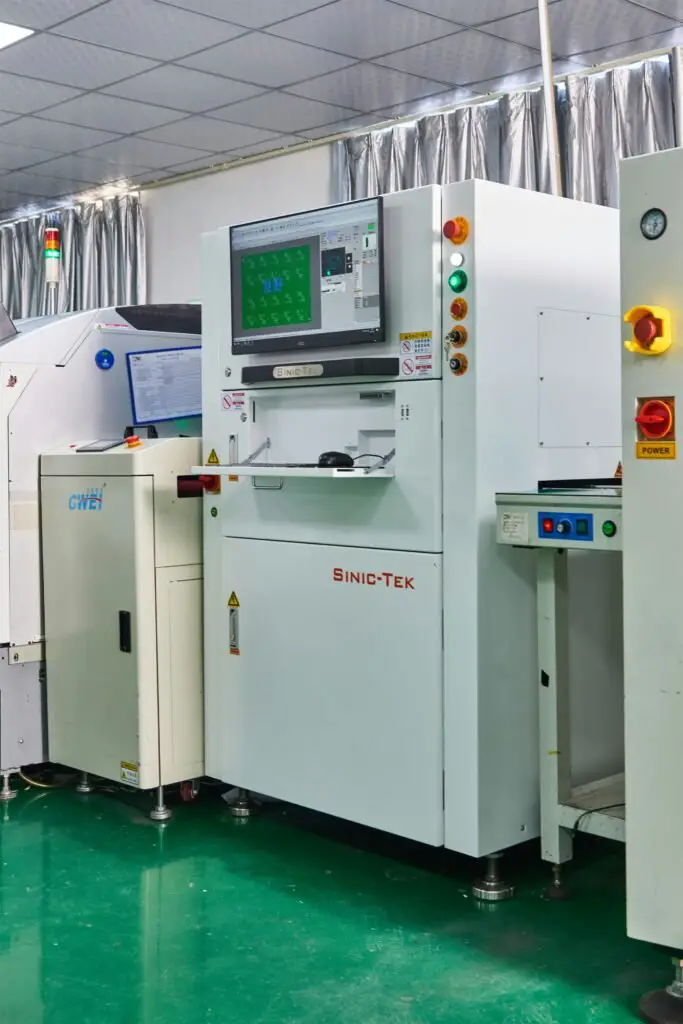Understanding Lie-Detection Technology
In recent years, lie-detection technology has evolved significantly, leveraging various advanced methodologies to assess truthfulness effectively. This technology is primarily rooted in three key components: facial scanning, voice tone analysis, and the identification of micro-expressions. Each of these elements plays a crucial role in creating an accurate picture of an individual’s honesty or deceit.
Facial scanning technology utilizes sophisticated algorithms to analyze subtle changes in an individual’s facial expressions. Through the examination of muscle movements and patterns, this technology can identify indicators associated with lies, such as unexpected frowns or shifts in the eyes. By focusing on specific areas of the face, lie-detection applications can detect incongruities between what a person is saying and their facial expressions, leading to more accurate assessments of truthfulness.
Another critical aspect of lie detection is voice tone analysis, which examines various vocal attributes, including pitch, tone, and pace. Research suggests that when an individual lies, their voice often displays detectable changes, such as increased pitch or rapid speech. By utilizing artificial intelligence, these applications can evaluate both verbal content and vocal characteristics, enabling them to discern potential deception during verbal communication.
Additionally, identifying micro-expressions plays a vital role in the effectiveness of lie-detection technology. Micro-expressions are fleeting facial expressions that reveal genuine emotions, even when an individual attempts to mask them. By capturing these brief expressions through high-speed cameras or other imaging technology, lie-detection applications can unveil underlying truthfulness that might otherwise remain hidden.
When combined, these technologies enhance the accuracy of lie-detection applications, providing a more comprehensive analysis of an individual’s honesty. As research in this field continues to advance, the potential for employing these tools in various applications, from security to personal relationships, becomes increasingly promising.
How Lie-Detection Tech Works
Lie-detection technology leverages multiple sophisticated methodologies to discern truth from deception. Central to this technology is the use of facial scanning algorithms, which analyze subtle facial movements and patterns. These algorithms are designed to recognize involuntary micro-expressions—brief flashes of emotion occurring on a person’s face. Such expressions can divulge hidden feelings and motives, often contradicting the verbal message being conveyed. By capturing minute changes in facial muscles, these systems offer insights into a person’s emotional state, serving as a crucial component of lie detection.
Another critical element of lie-detection technology is voice analysis. The tone of voice, pitch fluctuations, and speech patterns significantly contribute to understanding whether an individual is being truthful. Research suggests that liars may exhibit altered vocal attributes—such as increased pitch or irregular speech tempo—compared to when they are being honest. By utilizing sophisticated algorithms that can measure these variations, lie-detection technology enhances its capacity to evaluate vocal cues with precision.
In addition to face and voice analysis, physiological responses, such as heart rate and skin conductance, are also integral to lie detection. These biological indicators can suggest emotional arousal, which often accompanies nervousness or deceit. However, while these physiological measures provide useful information, they require calibration and context to achieve reliability.
The effectiveness and accuracy of lie-detection technology remain subjects of extensive research. Studies indicate varying levels of success, with some methodologies achieving accuracy ratings as high as 90%. Nevertheless, the environment, the honesty of subjects, and the context of the questioning can influence outcomes. Thus, while lie detection technology can be a powerful tool for understanding human behavior, its limitations warrant careful consideration.
Real-World Applications of Lie-Detection Tech
Lie-detection technology has found its way into various aspects of modern society, proving its usefulness across diverse fields. One prominent application is in the realm of human resources, where organizations are increasingly incorporating lie-detection methods into their hiring processes. By utilizing this technology during job interviews, employers can gain deeper insights into candidates’ honesty and integrity. This not only aids in identifying the most qualified individuals but also helps minimize the risk of hiring dishonest employees, ultimately contributing to a more transparent workplace.
Another significant area where lie-detection technology is making an impact is online dating. With the rise of digital romance, concerns regarding trust and authenticity have surged. Dating platforms are beginning to adopt lie-detection tools to enhance user safety. By ensuring that individuals are truthful in their profiles and communications, these technologies foster a more secure environment for users. As a result, participants can engage with higher confidence, knowing that they are less likely to encounter deception.
In addition to recruitment and online dating, lie-detection technology plays a crucial role in enhancing security protocols at airports. Security personnel can leverage this technology to assess the truthfulness of travelers during screening processes. By determining the veracity of travelers’ statements, airport staff can better identify potential risks or threats. This application not only streamlines security checks but also helps ensure public safety in an era where the stakes are incredibly high.
Overall, the practical uses of lie-detection technology span beyond mere curiosity; they present viable solutions across multiple industries. By integrating these tools, organizations can mitigate risks and make more informed decisions, enhancing the overall effectiveness of their operations.
My Experience Testing the App
Upon downloading the lie-detection app, I was intrigued to explore its capabilities. My initial test involved a casual conversation with a friend, where I decided to deliberately present a misleading statement. I claimed that I had recently completed a challenging marathon. Unbeknownst to my friend, I had not participated in any marathon at all in recent months. The app was rolling in the background, utilizing various metrics such as my voice pitch and speech patterns to analyze the veracity of my claim.
As I observed the app’s real-time feedback, I noticed an immediate spike in alerts as I made my false claim. The interface displayed a series of graphs indicating fluctuations in my vocal tone and the speed of my speech. Notably, the app seemed to zero in on specific characteristics of my delivery that were inconsistent with the declaration I made. For instance, my voice trembled slightly, which the app labeled as a potential indicator of deception. This reaction triggered a mix of amusement and amazement as I realized the level of scrutiny applied to my simple lie.
Moreover, the app provided a comprehensive analysis after the conversation concluded. It categorized my speech patterns and claimed that my confidence level had dipped during the interaction. It stated that successful lies must often be delivered with calmness, a trait I apparently failed to portray. This experience raised intriguing questions regarding the ethical implications of such technology. How accurate could this app be in more serious contexts, such as legal circumstances? As I pondered over these questions, it was evident that advancements in lie detection could significantly alter our understanding of honesty and trust.
Scary Levels of Precision?
The emergence of advanced lie detection technologies has sparked significant debate due to their impressive precision. These systems utilize a combination of artificial intelligence and biometric data such as heart rate, voice modulation, and facial expressions to assess the veracity of a person’s statements. The implications of such accuracy in lie detection extend far beyond mere curiosity, raising profound ethical, psychological, and social concerns.
At an individual level, the knowledge that one is being monitored with this level of vigilance can induce heightened anxiety and stress. Individuals may feel an acute sense of vulnerability, stripping away the comforting illusion of privacy in personal interactions. This psychological burden can manifest in various ways, including increased self-consciousness and reduced willingness to engage in open dialogue. In essence, the ability to detect lies with high precision may inadvertently discourage honest conversations or turn mundane discussions into high-stakes confrontations.
Moreover, the potential for misuse of such technology is a deeply alarming prospect. In the wrong hands, accurate lie detection can become a tool for manipulation, coercion, or surveillance. Employers, for instance, might leverage these capabilities in recruitment processes, creating an environment of distrust among employees. Similarly, law enforcement agencies could adopt these technologies for interrogation purposes, raising ethical questions about consent and the potential for wrongful accusations.
Furthermore, societal acceptance of such technology prompts a critical examination of our values. Should we embrace a tool that enhances accountability and transparency, or does the risk of overreach and violation of privacy outweigh its potential benefits? This dilemma evokes a broader discussion about the integrity of our interpersonal relationships in an era where trust might increasingly be challenged by technology. Thus, as we navigate these questions, it becomes crucial to balance innovation with ethical considerations and personal implications.
Should We Be Worried?
The advent of advanced lie-detection technologies has introduced a range of societal concerns that demand careful consideration. While the ability to detect deception may appear to enhance transparency in personal and professional interactions, it also raises significant privacy issues. The application of such technologies poses critical questions about the extent to which individual privacy should be compromised in pursuit of truth. This technology could potentially allow for invasive scrutiny of personal behaviors and motivations, tapping into the psychological and emotional domains of individuals without their consent.
Additionally, the ethical dilemmas associated with the implementation of lie detection in everyday life warrant serious deliberation. For instance, in contexts such as employment screening or judicial proceedings, the stakes of misinterpretation could lead to unwarranted repercussions for individuals. Trust in personal relationships may also be jeopardized, as individuals might feel compelled to monitor one another’s honesty, thus disrupting the foundation of mutual trust that underpins social interactions. The potential misuse of these technologies for manipulation or coercion introduces another layer of complexity that society must grapple with.
Equally important is the accuracy and reliability of these systems. While proponents argue that technological advancements can yield near infallible results, errors in detecting deception can occur. False positives could unjustly label honest individuals as deceitful, eliciting reputational damage and eroding social relationships. Therefore, it is crucial for policymakers, technologists, and ethicists to engage in a broad discourse, weighing the benefits of truth-seeking through such innovations against the essential values of personal autonomy and privacy. As we navigate this intricate landscape, a balanced approach will be imperative to ensure that the deployment of lie-detection technologies does not come at the expense of fundamental human rights.
Privacy vs Truth
In an age where technology increasingly permeates personal and social dimensions of life, the advent of lie-detection applications raises important questions about the balance between individual privacy and the pursuit of truth. This dichotomy reflects not only philosophical considerations but also real-world implications for personal rights. As these technologies become more sophisticated, they challenge traditional notions of privacy, particularly concerning how information is gathered and utilized.
On one hand, the promise of enhanced transparency through lie-detection technologies can foster trust in various settings, including interpersonal relationships, professional environments, and even legal proceedings. The ability to ascertain the veracity of information delivered by individuals can prove beneficial in forging stronger connections and maintaining integrity across different spheres of life. This truth-seeking aspect highlights the potential for these technologies to aid in conflict resolution and encourage honesty, which can, in turn, support societal cohesion.
Conversely, the introduction of lie-detection applications prompts serious concerns regarding individual rights and personal privacy. The very act of monitoring emotional and physiological responses may infringe upon one’s autonomy, as it can lead to unwarranted scrutiny and potential misuse of the gathered data. Moreover, the ambiguity surrounding consent becomes critical; individuals may find themselves subjected to assessments without their explicit approval. As organizations and platforms adopt these technologies, the fundamental question emerges: at what cost do we pursue truth?
Ultimately, navigating the complex landscape of privacy versus transparency in the context of lie-detection technology demands careful examination of ethical considerations and regulatory frameworks. As we strive to leverage these advancements, it is essential to prioritize individual rights while seeking to uphold a commitment to truth. Handlung through this balance will pave the way for responsible application in this rapidly evolving field.
The Ethical Minefield
The advent of lie-detection technology raises several moral issues that require careful examination. One of the primary concerns revolves around the concepts of consent and privacy. Utilizing an application capable of detecting deception inherently involves assessing individuals’ honesty without their explicit approval. This raises questions about the ethical implications of monitoring a person’s truthfulness through technology, particularly in situations where individuals may not be fully aware that they are being evaluated. Consent is a crucial aspect of any ethical interaction; thus, the deployment of such technology demands clear guidelines to ensure individuals have the right to know when they are being subject to analysis.
Furthermore, the accuracy of this technology is not guaranteed, leading to the potential for misinterpretation of data. If results are assessed without proper context, there exists a substantial risk of unjust labeling of someone as dishonest. Errors in interpretation could arise from various factors, including emotional state, environmental context, or even technical malfunctions. As such, relying solely on technological evidence for critical judgments can lead to unjust consequences, affecting personal relationships, professional reputations, and legal proceedings.
The societal implications of employing lie-detection technology are equally pressing. As society increasingly values transparency and accountability, what does it mean to embrace technology that can potentially infringe upon individual freedoms? The normalization of such applications could lead to a culture of surveillance, where individuals feel compelled to prove their honesty continually. Balancing the desire for truth with respect for privacy rights is essential as this technology becomes more prevalent. Ultimately, the ethical minefield associated with truth detection will prompt significant discussions about right and wrong, urging stakeholders to consider the broader ramifications of adopting such tools in personal and societal contexts.
Conclusion and Future Outlook
As we delve deeper into the realm of lie-detection technology, it becomes evident that innovations such as the app discussed have significant implications for both individual relationships and broader societal dynamics. This app, designed to identify deception even before users themselves may be aware of it, raises critical questions about trust, privacy, and ethical boundaries. The remarkable accuracy of such technology highlights the potential to revolutionize various sectors, including law enforcement, mental health, and personal relationships. However, alongside these advancements come considerable ethical concerns. The ability to detect lies does not merely promise efficiency; it challenges the fundamental notions of human interactions and trust.
Looking ahead, the future of lie-detection technology will likely involve more sophisticated algorithms that leverage artificial intelligence to enhance accuracy and usability. These advancements could result in tools that not only identify deceit but also provide insights into the motivations behind dishonesty. As this technology evolves, there will be a need for refined ethical guidelines to govern its application. Stakeholders, including tech developers, legislators, and ethicists, must work collaboratively to ensure that the deployment of lie-detection systems balances innovation with respect for individual rights.
Furthermore, public perception of these technologies will play a pivotal role in determining their integration into everyday life. Society’s understanding of trust and deceit may transform as these applications become more commonplace. While the possibility of greater transparency in interactions is enticing, it is essential to address the implications of diminished privacy and the potential for misuse. In summary, the future of lie-detection technology appears promising, but it is imperative that we navigate its development thoughtfully and responsibly to ensure the benefits are available to society while maintaining ethical standards.

It could cover a range of topics related to health, wellness, beauty, personal growth, and social issues, all from the perspective of striving for beauty, intelligence, youthfulness, and impartiality





